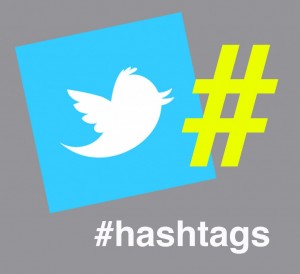
You just wrote a solid 115-character quip on your deeper analysis of a common observation that you’re sure will get at least five retweets and a handful of favorites from your followers. But you have 140 characters worth of space. You can’t just waste 25 characters, but the current draft already reflects perfect wording. What do you do? Of course! Add a hashtag!
That seems to be the thought process behind many of the tweets I see stream across my somewhat-cluttered Twitter stream. As a professional communicator, it’s bothersome that these tweeters don’t have the courtesy to ask themselves, “How does this add value to my message for my followers?” Meaningless hashtags are so prevalent that I considered whether or not the majority of tweeters understand what a hashtag is and its purpose. It’s not as absurd a question as I thought, made apparent when lifelong broadcaster and Emmy Award recipient Vin Scully asked “What is hashtag?” on live TV.
The simple answer to Scully’s question, of course, is a search indexing tool for Twitter that allows the site to more easily sort messages focused on a specific topic. The hashtag allows for a collective discussion around a single topic, whether it be a conference or trade show, current event of interest to masses of people, or an informational theme such as “dailymotivation” or “fitnesstips.” This helps the Twitter community build their social network with people who provide content they’d enjoy.
But just how the use of texting has evolved from its initial purpose as it’s been adopted, so too has the hashtag.
We’ve seen the “hashtag as the punch line of a joke” tweets. Ending a message about a trip to Dog Beach might be #Wetdogsmellairfreshener. Capping off a confession of love for Nutella we could expect #NoreallyIcouldeatNutellaateverymeal. Or concluding an observation of road workers sitting down on their lunch break someone might announce #Mytaxdollarsarepayingforyoutoeatasandwich. I’m not convinced others will search any of those hashtags with interest in joining the conversation.
Then there are hashtags that were invented specifically so that anyone interested can join the conversation and offer an opinion. These are hashtags like #WeCan’tDateIfYou and #ThingsshorterthanKimKardasiansmarriage. Rather than being a reactionary product to something else, there is no reasoning for these hashtags to exist beyond the fact that they can exist.
The variations of hashtags are so vast that, in their quest for constant irony as a counter culture, hipsters adopted the hashtag #hashtag. Is it ironic? More like self defeating.
So are hashtags a trend? Will they go the way of Ed Hardy T-shirts and Von Dutch trucker hats?
Essentially, as online conversing continues to become the status quo, the hashtag is showing characteristics of natural language. People are manipulating, misusing and experimenting with it. They’re the opposite of a trend because they’re not one thing and are constantly evolving. In that sense, I guess, explaining the “right” way to use a hashtag is like explaining the right way to deliver a joke or what facial expression is correct for the subject of discussion. You can’t define what’s “right.” In the same way you can’t stop that one co-worker from winking after each sarcastic statement he makes, you can’t stop tweeters from hashtagging every other word in their message. But you can unfollow them. #Winning















